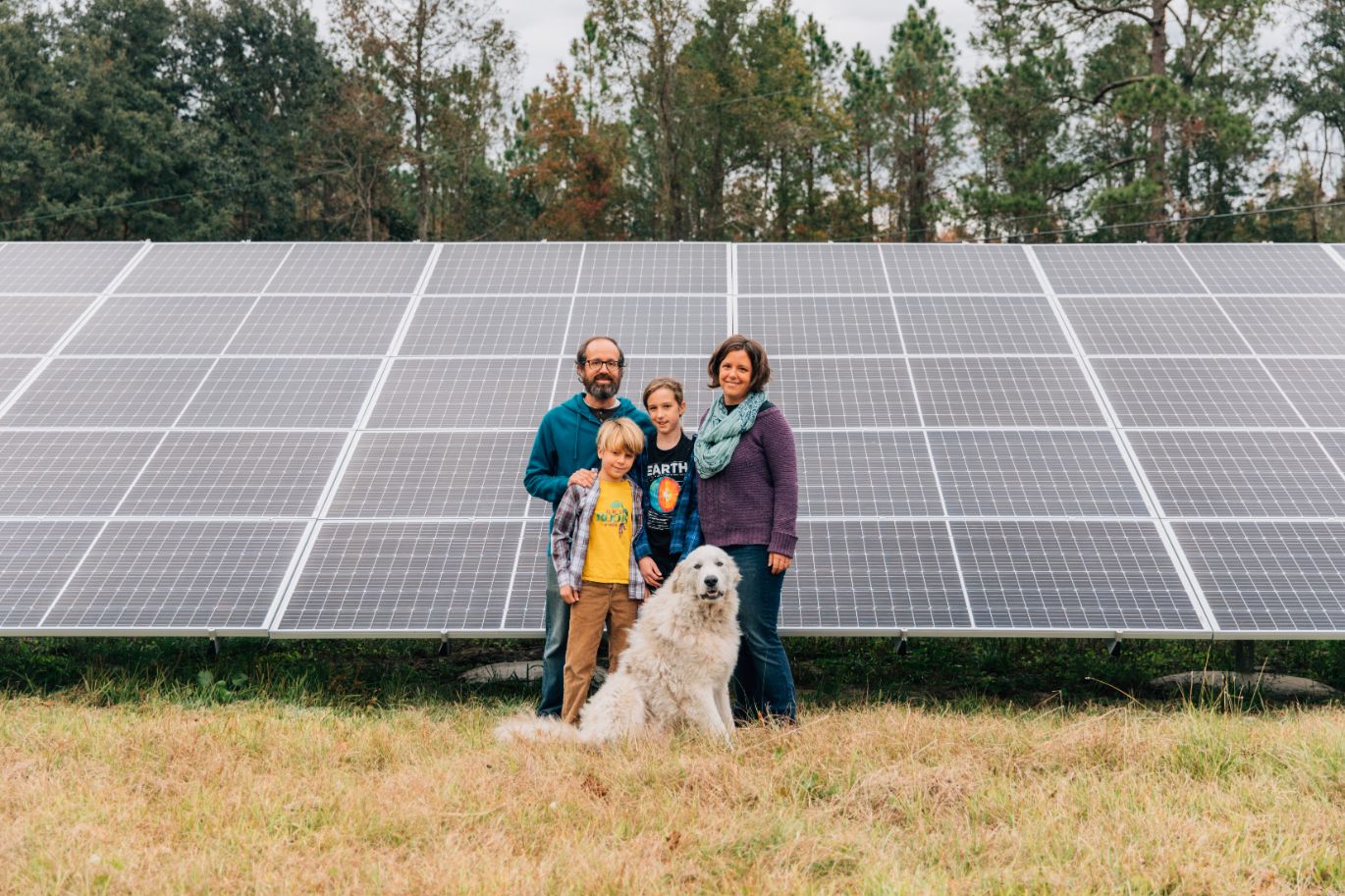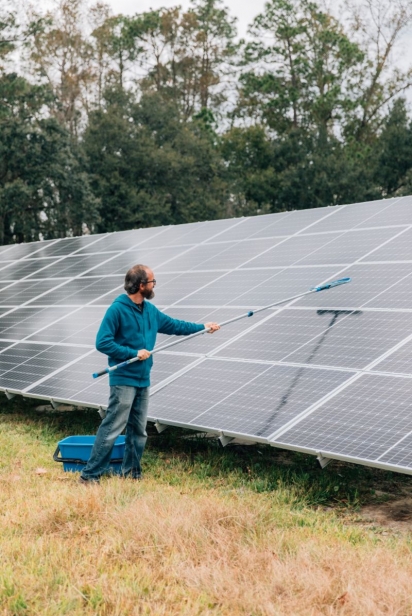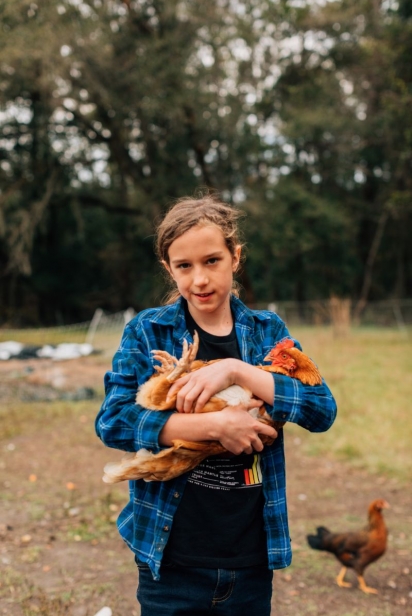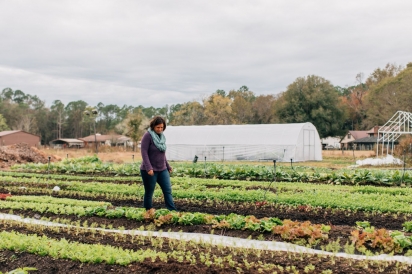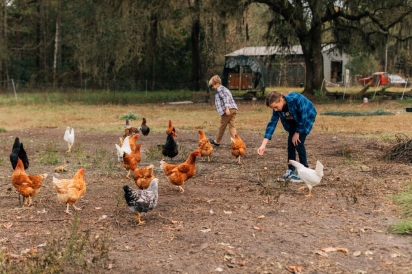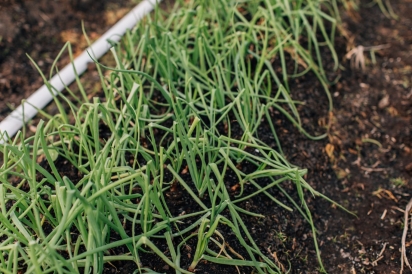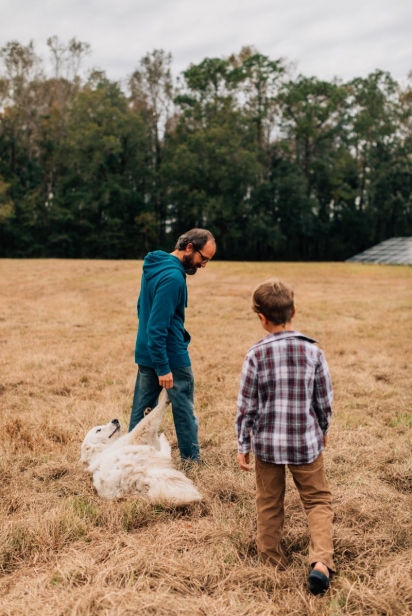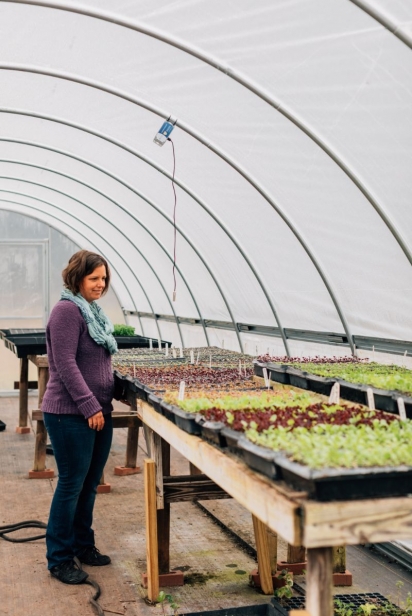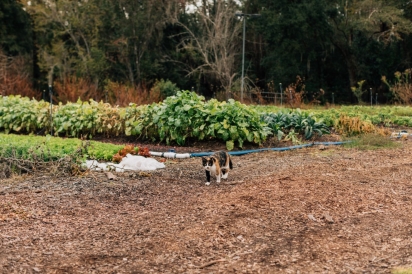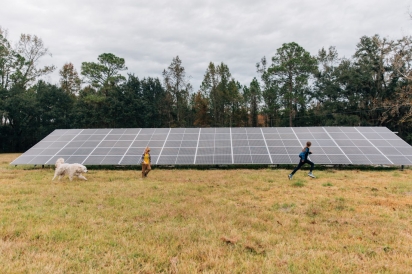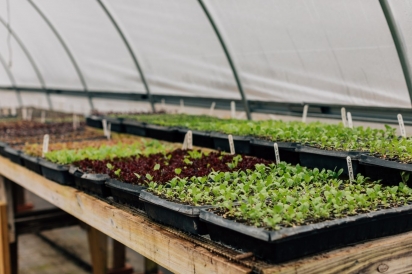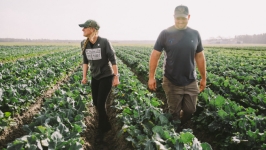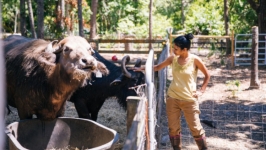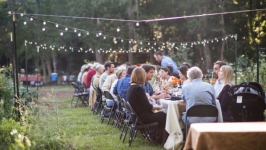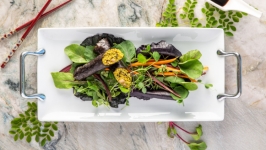Juicy Roots Farm Powered by The Sun
As I pull into Juicy Roots Farm my attention is drawn to the charming home and all the plants, but something else catches my eye. Turning my head I am greeted with the sight of the newest addition on the property, a 55 panel solar array in a large open field.
I am also greeted by Ian Fiske, a quietly brilliant individual, who leads me to the farm’s growing field as we discuss the recent early freeze. His wife and business partner Jessi is walking among their garden beds which are alive with vibrant herbs, lettuces, winter greens and root vegetables. They eagerly show me their recent farm expansions and, as a fledgling farmer myself, I experience thrills on their behalf as they list their achievements. A second well. An outdoor walk-in cooler. The new larger greenhouse where microgreen experimentation is underway. A giant bubbler for gently washing leafy greens along with an enormous salad spinner constructed by Ian.
Living a responsible and eco-conscious lifestyle has been a priority for the Fiskes, especially since they started their family and farm. Jessi majored in biology and has always had a thirst to work with nature. Along with math and engineering degrees, Ian also holds a degree in ecology. They broke ground on their land in 2014 as a homestead and started selling their homegrown herbs and vegetables in 2017. Their produce can be found at Dig Local Network's Beaches farmers' market on Saturdays.
Sustainability touches every aspect of their days, including the choice to use as many electric tools on the farm as possible. “Investing in solar would have happened even if we weren’t farming, just to be more sustainable as individuals on the planet,” Jessi says. As farmers, they made a conscious decision to balance their recent expansions with carbon offset so as not to increase their footprint. Some self-preservation went into their decision as well, since their wells won’t run without power. The system also puts the farm in a better position to prepare for the reality of increasingly active hurricane seasons. Power is needed to operate, among everything else, the wells for their home and fields. With the tax credit currently offered for installing solar panels shrinking annually, the pair contacted a local company in May, “just to see,” laughs Ian, and when circumstances aligned they “just went for it.”
Digging trenches for power lines and installing the impressive array during the rainy season in Florida presented the primary challenge. But since they were using the newest technology available, Jessi and Ian had time to collaborate with the company to design, plan and install just what they needed. The traditional concept of panels on the roof of their home evolved into a charming idea to panel the roofs of sheep shelters in the farm’s field. The array’s current form made the most sense in terms of longevity and use of space on their property, which gets lots of sun but is swampy and prone to flooding. By the end of November 2020, the operation was up and running, sending energy to three batteries. While running the farm and home typically consumes about 50-90 kilowatt-hours (kWh) daily, the array generates at least this amount of energy most days. The power comes directly from the array during the day and the batteries after sunset. The three batteries can store a total of 30 kWh per battery.
The Fiskes see their setup as a long-term investment and not the end game. “There is a disconnect between pure economics and the environmental benefit to offset climate change. It’s also not as financially inaccessible as you may think. There was no down payment and it was an easy decision for us based on what we choose to pay a monthly payment on. People pay monthly payments for all kinds of things,” says Ian. And they derive much satisfaction with their decision when they check the app and see just how much of an impact the switch to solar has already made.
Future plans for the farm are to add more grow space in addition to walking trails, orchard paths and expanded parking. Offering food to their community via a stand or store, hosting herbal and garden classes and converting all delivery and personal vehicles to electric are also in the works. Talking about their plans brings a twinkle to Jessi’s eye. “We want to show people what’s possible and doable regarding energy options, sustaining pollinator habitats and growing food, to normalize seeing alternative energy in our landscapes. That it’s really fun, affordable and not super hard. We hope it can be inspiring.”


